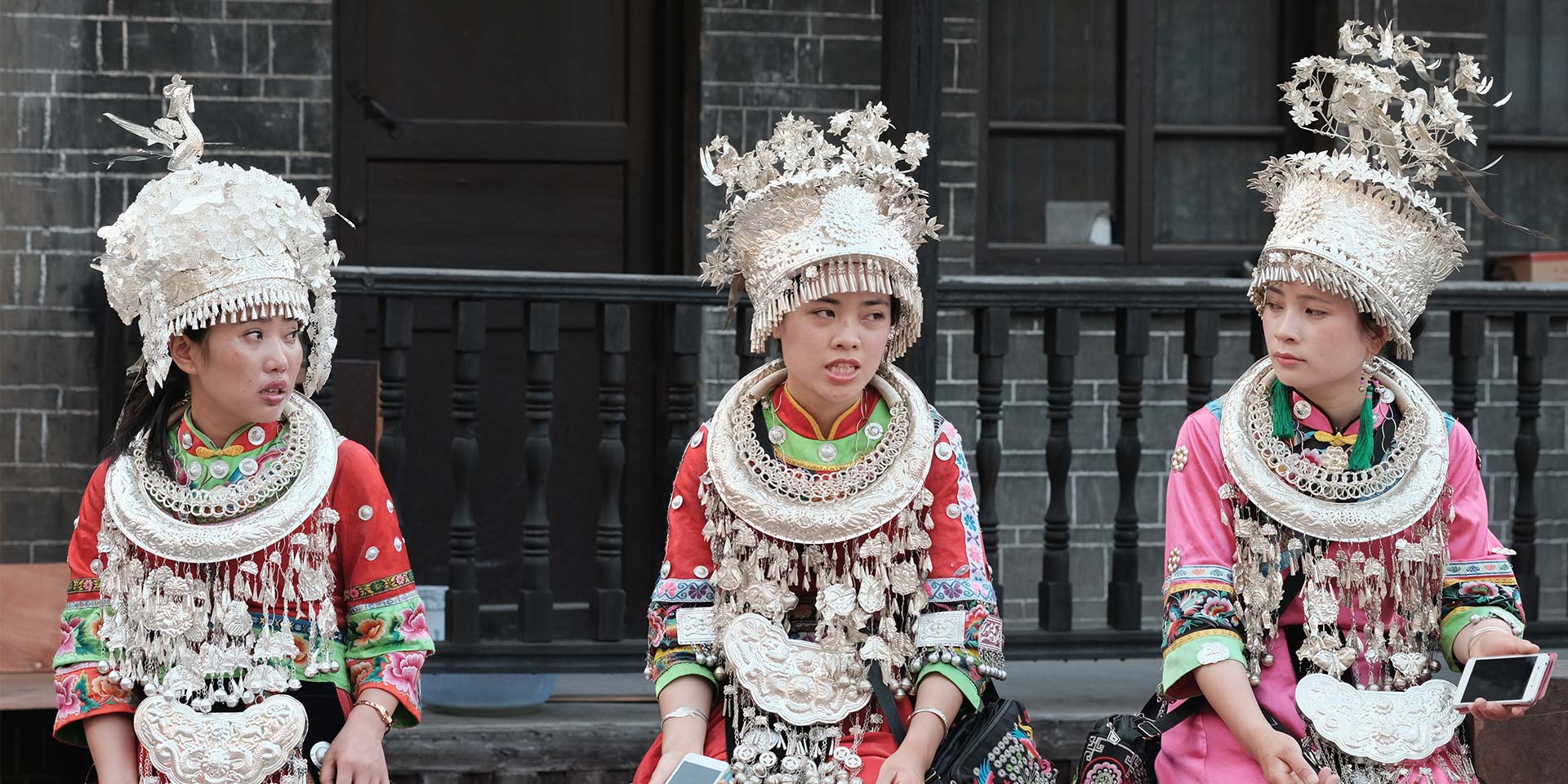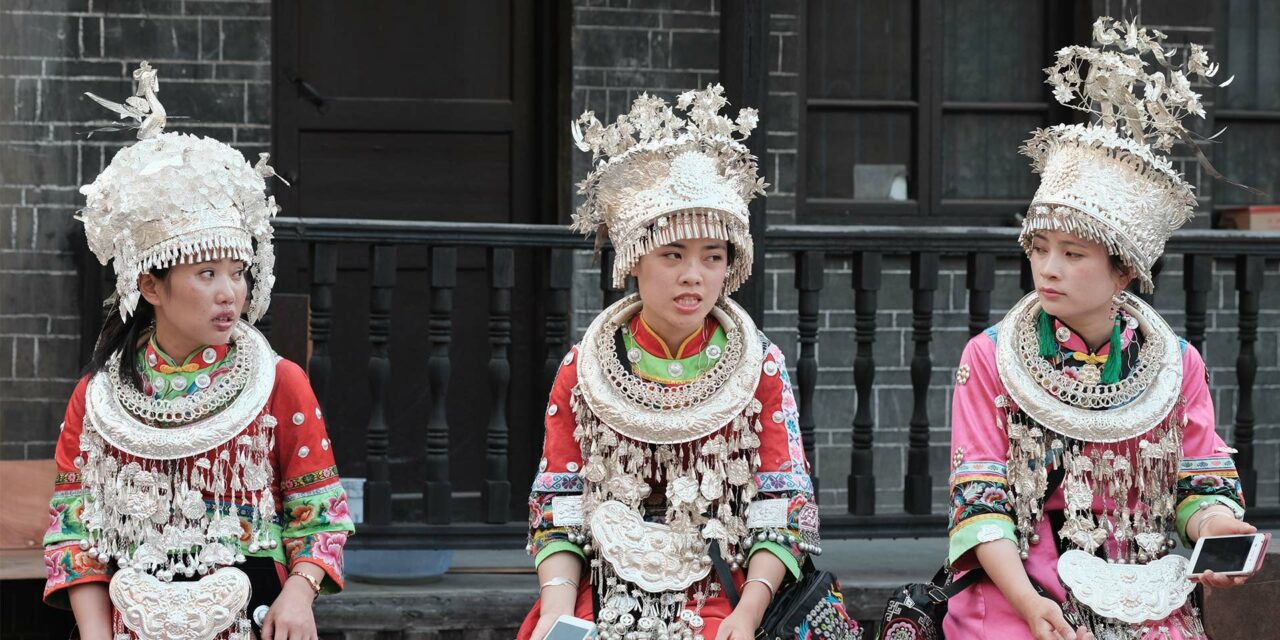“Without silver or flowers a girl won’t be a girl,” a Miao saying goes. “The beauty of the golden pheasant lies in its feathers; in the Miao, it’s their silver ornaments,” says another.
Silver is an important part of the culture of the Miao, an ethnic minority in southern China who live mostly in Guizhou province but also in Yunnan, Guangxi, Hunan, and Hainan Island.
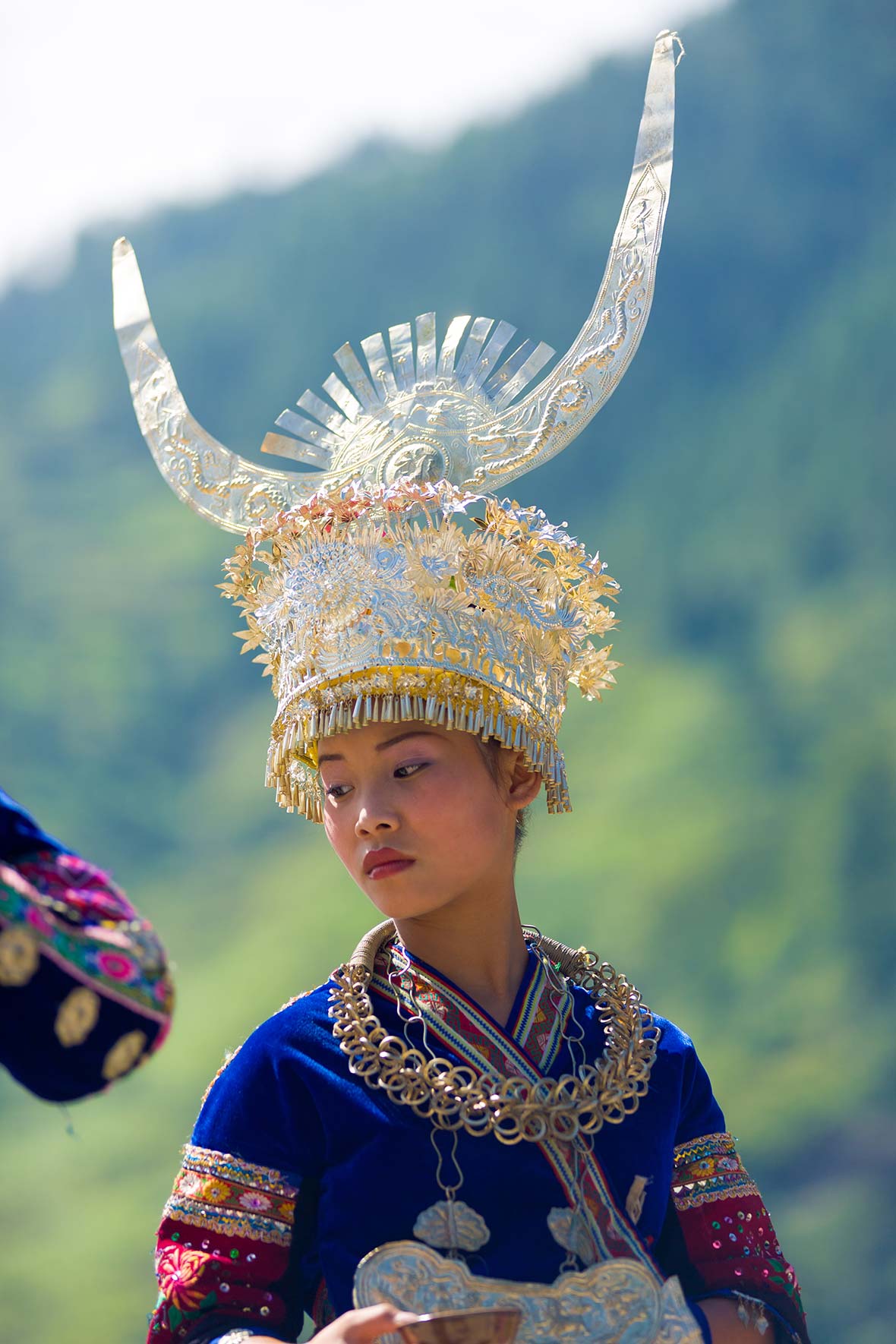
ABOVE: The crown-like headdresses of the Miao.
Miao women wear extremely ornate silver headdresses, collars, breastplates, chains, aprons, and back pendants that often hang down to the waist, as well as bracelets, earrings, hairpins and bells on special occasions like festivals, such as weddings and folkloric dances. The crown-like headdresses are so tall and elaborate they resemble chandeliers. Curved silver horns sometimes top the headdresses, whose raised patterns can depict dragons playing with a pearl.
Designs are intricately embossed into flower, butterfly, animal and spiral shapes, with delicate filigree. From the time a Miao woman is a child, she has silver jewelry she inherits from her family. By the time she weds, her collection grows as her family buys more ornaments.
Silver signifies beauty, affluence, and is a talisman against evil spirits; the bigger, fancier, and more ornate the better. A woman’s silver ensemble can weigh more than 40 pounds.
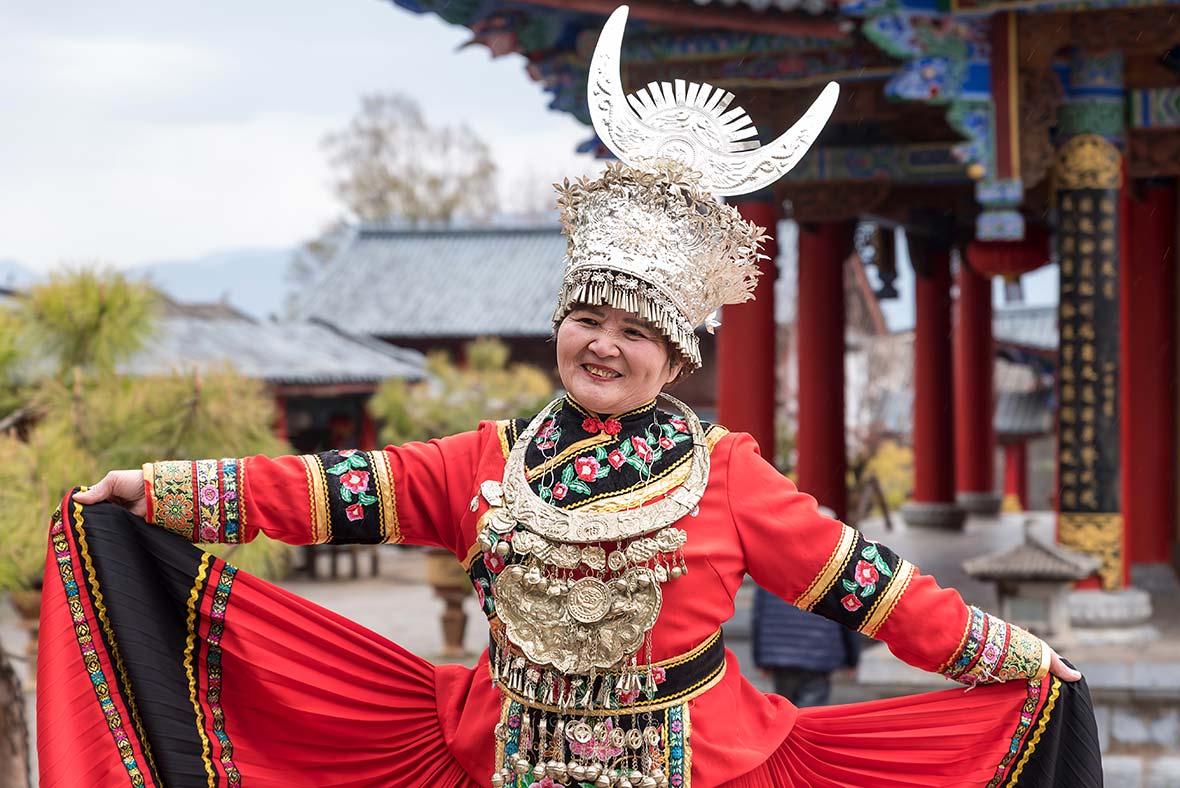
ABOVE: Traditional dance.
One piece of jewelry can consist of hundreds of smaller pieces. Silver patches on clothing in squares or rectangles — often of animals from dragons, tigers, lions, phoenixes, golden pheasants to butterflies — are worn by Miao in the Qingshou River area. Their children’s bonnets also have silver ornaments displaying Chinese characters for prosperity, happiness and longevity, or animals.
Miao farmers who live in mountainous areas (mountains and hills cover over 90 percent of Guizhou) actually consist of different subgroups who have their own dress, customs, and dialects. China’s Han majority calls them Black, Red, Flowery, and so on, referencing their clothing and location. Black Miao wear lots of black and purple, for example.
A fabulous festival at which to see hundreds of Miao women resplendent in silver finery and vividly-colored dresses with accordion-pleated long skirts is the Sisters’ Meal Festival. A matchmaking event so young men and women can meet and find their future husbands and wives, the festival is marked by dancing (or at least attempts, all that clanging silver is heavy), food, and antiphonal singing.
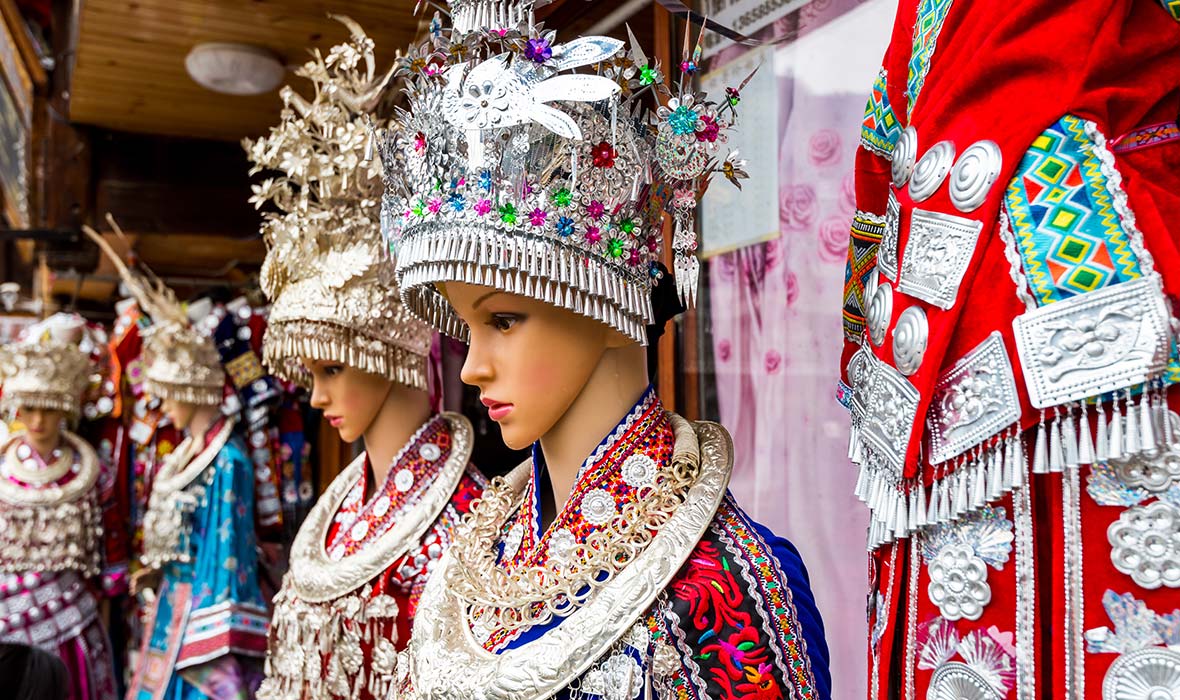
ABOVE: Trinkets for tourists.
Women offer gifts of glutinous rice colored bright red, blue, and yellow wrapped in leaves or a handkerchief to young men. A symbolic message is inside: two chopsticks means she’s willing to accept the man’s marriage proposal; garlic and pepper say she won’t.
The spring three-day festival is held in the middle of the third lunar month (April 7 – 9, 2020) in villages like Shidong in eastern Taijiang county. It’s over 50 miles northeast of Kaili, capital of the Qian Dongnan Autonomous Prefecture, home to Miao (two-thirds of its population) and Dong ethnic minorities.
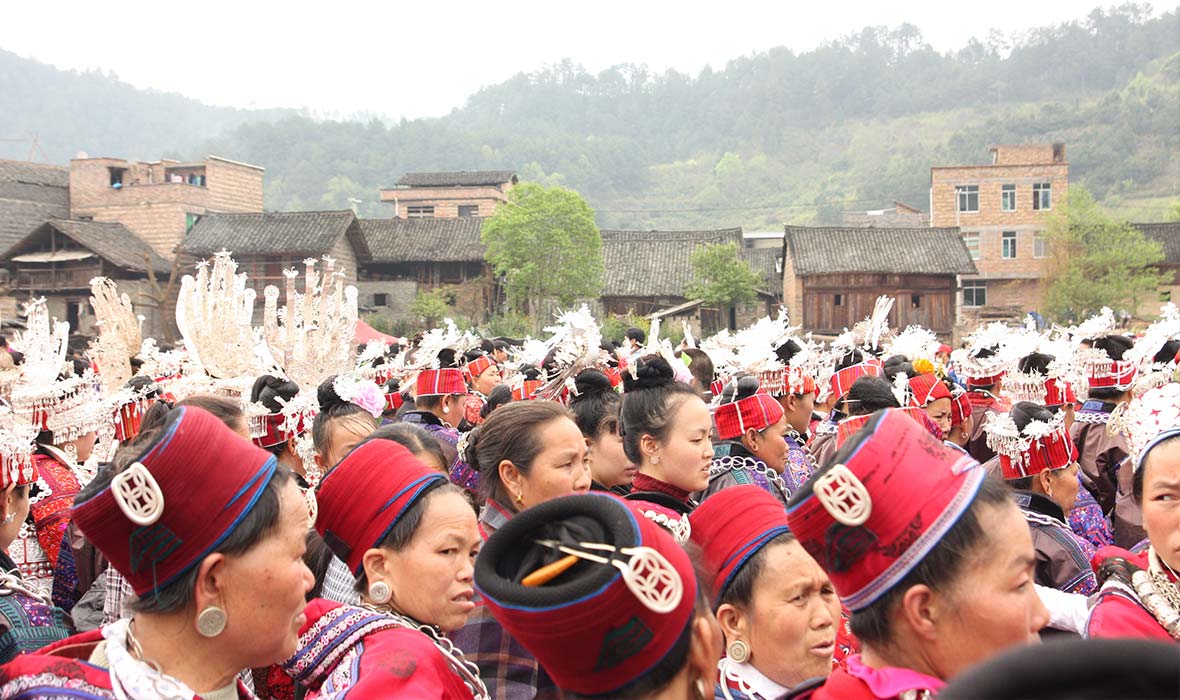
ABOVE: Miao ladies at the Sister Festival.
Another is Gannangxiang, a harvest festival marked by dancing to the lusheng, a musical instrument made from a dozen bamboo pipes and a gourd mouthpiece. It’s in Zhouxi, a Miao village about 10 miles south of Kaili, in the square of that name.
Highly-skilled silversmiths abound in villages like Shidong. They make ornaments the traditional way: over fire with lots of pounding, turning the silver into very thin filaments by pulling it through different-sized holes and then twisting it into various shapes.
Today, the ornaments are made from alloys, and much lighter. Artisans work it to fit contemporary tastes, according to Lindsay Shen, author of Silver: Nature and Culture and resident of China for eight years. The government has given the Miao silver stipends since the 1950s as a tribute to their culture.
But it’s not just in the out-of-the-way villages that travelers will find these silver crafts. In Shanghai, shops like Brocade Country, a shop in the French Concession, sell secondhand Miao silver and textiles.

